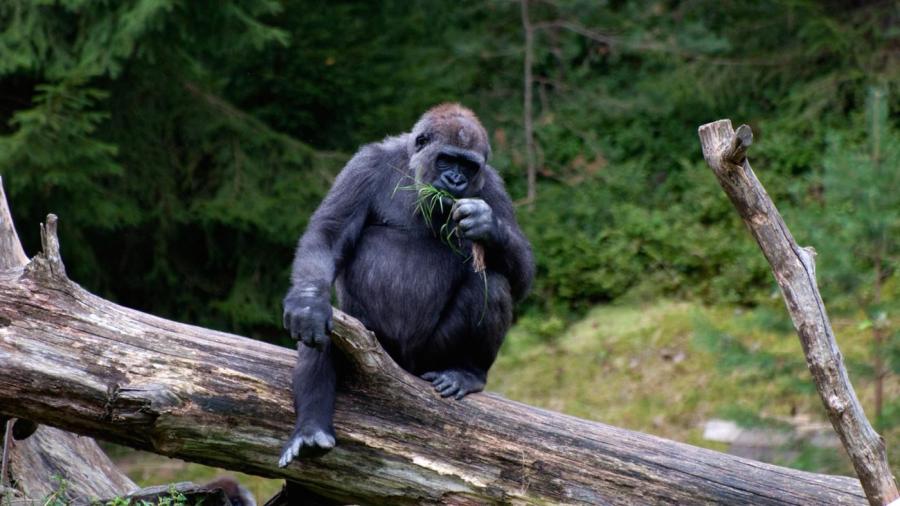What Adaptations Does the Gorilla Have?

Gorillas have both physical adaptations, such as their teeth and fur, and behavioral adaptations. On cold days, gorillas stay near their sleeping areas and huddle with each other for warmth.
Most gorilla adaptations are due to their habitat. Gorillas typically live in the lowland rainforests or in mountain forests. They are herbivores, so their teeth are flat, which allows them to grind the cellulose in their plant diet. They have bacteria in their colon that further breaks down cellulose into digestible carbohydrates through fermentation. Because of their diet, gorillas also have enlarged intestines to digest the cellulose, which means their stomachs are larger than their chests.
The gorilla’s dense hair protects the skin from biting insects. It keeps them warm as well, which is important for mountain gorillas since nights often get below freezing. Lowland gorillas, though, have thinner hair that keeps them cool.
Gorillas have developed larger muscles in their arms than in their legs to accommodate gathering foliage and for defense. They usually use their arms for locomotion. Thumbs that are longer than their fingers help both with grasping and with movement.
Gorillas have adapted behaviorally by living in family groups led by a dominant male. The dominant male dictates when the group wakes, eats and goes to bed. Gorillas are typically most active in the morning.





